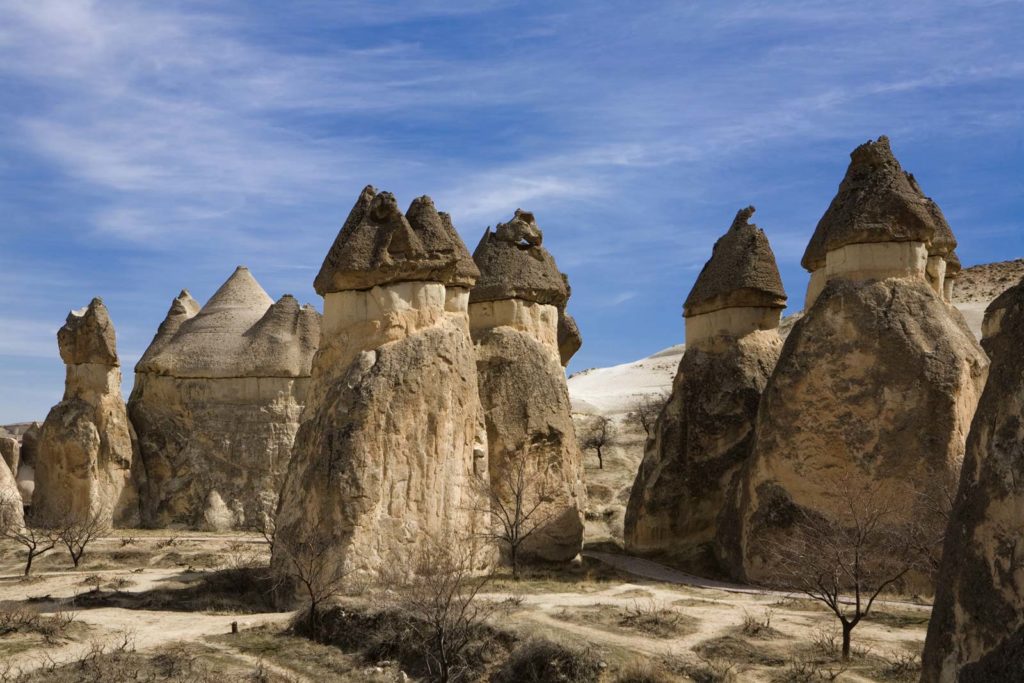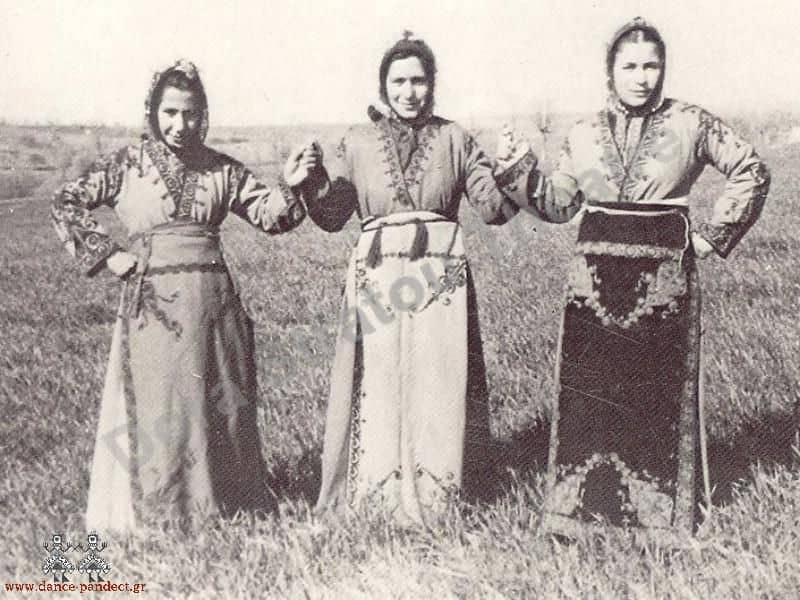Turkey: How the Greek presence in Cappadocia came to an end Uzay Bulut
An international academic conference on the multicultural history of the Anatolian city of Kayseri in the historic region of Cappadocia has recently been banned by Turkish authorities.
The conference on “The Social, Cultural and Economic History of Kayseri and The Region” organized by the Hrant Dink Foundation, was set to discuss issues relating to the local changes in Kayseri between 1850 and 1950. Several scholars from Turkey, the US, France, Greece, and Armenia would present their research at the conference on October 18 and 19.
The Hrant Dink Foundation, an organization founded after the assassination of Armenian journalist Hrant Dink, first tried to hold the event in Kayseri, but their attempts failed.
The Foundation announced on its official website that the governorship of Kayseri called to inform them that it would be “inappropriate” to gather the conference in the city. The phone-call came weeks after the organizers asked to have a face-to-face meeting with the governorship, and their request for an explanation and to justify the refusal received no answer at all.
When the conference could not take place “due to the interference of the Kayseri Governorship”, the Hrant Dink Foundation intended to proceed with it in Istanbul at the premises of the Foundation.
But this time, the conference was prevented by the authorities in Istanbul (Constantinople). The Foundation once again announced on its website that “After all the preparations were made, and speakers from around the world had arrived in Istanbul,” the conference was banned. The organizers added that the Şişli Governorship gave the official notice of the ban to the Foundation and this notice included no explanation for the Governorship’s decision.
Had it not been banned, the participants of the conference would have discussed issues concerning the Greeks, Armenians, Protestant Christians, Turks and other communities of Kayseri or Caesarea.

From Caesarea to Kayseri
An ancient city in Asia Minor, Caesarea served as the capital of the Roman province of Cappadocia and the Romans called it “Caesarea Cappadociae”. The city was formerly known as Mazaka. According to Professor Nigel Guy Wilson’s Encyclopedia of Ancient Greece:
“Mazaka became the capital in the 2nd century BC but was renamed Caesarea in the 12 – 9 BC, and became the provincial capital in AD 17, serving not only as an administrative center but as a focus of literature and learning.”
When the western part of the Roman Empire collapsed in 476, Caesarea, a city of strategic importance, came within the eastern realm. The Greek-speaking Eastern Roman Empire later came to be called “the Byzantine Empire” by modern historians.
Caesarea is significant in Christian history, as well: It became a nucleus of Christianity in the 4th century when Saint Basil the Great reputedly established an ecclesiastical center there. According to Southern Europe: International Dictionary of Historic Places:
“The Cappadocians were converted to Christianity by St. Paul, and from Cappadocia the faith was disseminated throughout eastern Anatolia. King Tiridates III of Armenia, the first to establish Christianity as the official religion, was converted in 314 by St. Gregory the Illuminator, who came from Caesarea.
“Caesarea was centered on an ancient acropolis on the slopes until the fourth century A.D. A new city was built on the plains around a church and monastery built by St. Basil the Great, the bishop of Caesarea. Basil born in Caesarea in 329, was called ‘master of the holy.’ He was one of three Cappadocians (the others were St. Gregory of Nazianzus, and St. Gregory of Nyssa) whose writings were said to be second only to the scriptures in formulating the theology of the early Christian Church.”
After the inception of Islam in the 7th century, the region became a target of Muslim armies pouring out of Arabia. It was first the jihadist commanders of the Umayyad Caliphate that launched military campaigns against the Byzantine Empire. The Arab commander Maslama ibn Abd al-Malik of the Umayyad Caliphate, for instance, invaded Cappadocia and took Caesarea from the Greek Byzantines temporarily in AD 726. According to the Southern Europe: International Dictionary of Historic Places,
“When Arabs began their attacks, the ancient empires of Byzantium and Persia, spent by wars and internecine struggles, could not mount strong resistance…. Their [Arab] raids occurred almost annually and took their toll on Asia Minor. They reached Caesarea as early as 647… Caesarea was captured in 726 but in 740 emperor Leo III drove the Arabs out…
“The peace was only temporary, however, and in 797 Arabs again invaded Cappadocia. On more than one occasion, Byzantium had to pay tribute to the Arabs. The Byzantine Empire had the power to win a war with the Arabs, but they were hampered by internal intrigues and dissension and preoccupied with religious debates. Emperor Nicephorus I, who reigned from 802 to 811, refused to pay tribute but was defeated and forced to pay by a huge Arab army in 806. Internal troubles in Arabia in 809 stopped the raids until 890. The Byzantine triumph over the Arabs came under Nicephorus II Phocas.”
Yet, Islamic jihad against Christian Byzantines continued. Turks were the next group of invaders. The Seljuk Turks, originally from Central Asia, invaded and sacked Caesarea in 1067. The city then came under the control of other Muslim groups such as Danishmendids, the Anatolian Seljuk Sultanate and finally by the Ottoman Turks in 1515. The Byzantine Empire survived until the Ottoman invasion and sack of Constantinople (Istanbul) in 1453. Under the Ottoman rule, Christians and Jews became “dhimmis”, distinctly subjugated, second-class non-citizens who had to pay heavy taxes (jizya) to be able to live as non-Muslims.
When the Turkish Republic was founded in 1923, the city, called Kaisariyah by the Arabs and later Kayseri by Turks, was passed down to Turkey.

Despite the severe oppression during the Ottoman era, there had been a continuous Greek presence in Cappadocia since antiquity – until the 1913-1923 Christian genocide that targeted Greeks, Armenians and Assyrians and the subsequent Greek–Turkish forcible population exchange of 1923. Professor Hannibal Travis writes that during the genocide:
“Greek men became victims of murder, torture, and starvation; Greek women suffered all this and also became slaves in Muslim households; Greek children wandered the streets as orphans ‘half-naked and begging for bread’; and millions of dollars’ worth of Greek property passed into Muslim hands:
“American diplomatic and journalistic sources confirmed Ambassador [James] Bryce’s charge of an Ottoman policy to exterminate Christians other than the Armenians. According to the American ambassador to Constantinople from 1913 to 1916, Henry I. Morgenthau, widely regarded as a principal source of information on the Armenian Genocide: ‘The story which I have told about the Armenians I could also tell with certain modifications about the Greeks and the Syrians,’ as Assyrians were often known to the West, especially those adhering to the Syrian Orthodox Church:
“Absent a governmental intention to exterminate the Christians of the empire, it would be nearly impossible to explain how the massacres, rapes, deportations, and dispossessions of the Armenian, Assyrian, and Greek Christians living in the Ottoman Empire at the time of World War I could have taken place on such a vast scale. How could such a remarkable degree of coordination and common purpose in slaughtering civilians, ravaging women, orphaning children, and stealing money and property have emerged without organization and direction from above? Indeed, it takes a little searching to uncover abundant evidence of planning for genocide.”
As the Greek population got annihilated in Anatolia from 1913 to 1923, so did their cultural and religious heritage. Innumerable Greek churches, monasteries, school buildings and other properties either “disappeared” or were converted to other uses. Many were destroyed outright. The remaining ones became the “new property” of Muslims of the country.

The Hrant Dink Foundation has long been investigating these issues and published a book entitled “Kayseri with Its Armenian and Greek Cultural Heritage” in 2016. The book also presents a list of the Armenian and Greek churches, monasteries, chapels, and schools, among others, in Kayseri that have been destroyed, are used for other purposes or left to deteriorate by neglect. A few examples include:
“The Greek church of Akkışla’s Kululu village has become a mound, the current local name of which is “Çataltepe.” Monumental building blocks and treasure hunters’ digs can be spotted.
“The Church of Agios Georgios in the neighborhood of Karacaören in Bünyan, which currently functions as a mosque, has retained its original bell tower and gate.
“A part of the Iperagia Theotokos Monastery in the village of Doğanlar at Bünyan was still standing until 1955 when it was totally demolished.
“Agios Georgios Greek Church in the village of Karacaören at Develi was converted into a mosque and was renovated in 1966.
“Along with the nearby ruins of a church and a bath complex, the Byzantine ruins in Gereme in Bünyan comprise a non-extant settlement, thought to be a Greek monastery.
“The Greek church in Kocasinan’s Molu village has fallen into disrepair. Village residents point to an old building that is currently used for dwelling as the site of the church.
“The Greek school in the neighborhood of Erkilet in Kocasinan is currently in ruins. The use of spolia is evident in the surrounding buildings.
“A building in Melikgazi’s Gesi neighborhood, which is said to be a Greek church converted to a mosque in 1925, currently functioning as a post office.
“The Agios Georgios Greek Church in the village of Taşlık near Özvatan, for which an official restoration request was submitted in 1906, has been converted into Taşlık Mosque.
“The building of the Kimisis Theotokou Greek Church in the Harman neighborhood of Talas, built in 1890 over the demolished original church, is now Yaman Dede Mosque.”
On October 6, the human rights organization, International Christian Concern (ICC), issued a statementon Turkey’s prevention of the Kayseri conference. It said, in part:
“This kind of conference covers several subject matters that the government has a long history of suppressing. The years 1850-1950 cover the years immediately before, during, and after Turkey’s genocide of Christians. Many of those Christians who survived the genocide now have descendants living in Greece and Armenia. Turkey consistently denies the genocide and makes every attempt at blocking efforts to raise awareness about Turkey’s historical record of persecution.
“The freedom of expression is severely restricted in Turkey. For Christians, many of whom are still suffering the consequences of genocide, this restriction is doubly oppressive. Many desire to speak about these problems, but the government’s abuse of using national security reasons to restrict free speech makes doing so incredibly challenging.”

Today, the descendants of Cappadocian Greeks are known to reside mainly in Greece and other Western countries. For instance, Elia Kazan (Elias Kazantzoglou) a Greek-American director, producer, writer, and actor, was born in Constantinople to Cappadocian Greek parents originally from Kayseri. However, the Cappadocian Greek civilization has been almost completely wiped out. Cappadocian Greek, for instance, is an “extinct” language in Turkey, according to the UNESCO Interactive Atlas of the World’s Languages in Danger.
Expulsions, massacres, and genocide with the goal of achieving “Turkey for the Turks” have resulted in the complete homogenization and Islamization of Anatolia. Due to the lack of freedom of speech and academic research and the constant propaganda in the educational system and the media, the true history of the Islamization of the Turkish population and the destruction of the advanced, indigenous civilizations there remain a mystery for many Turks.
The only way to break the mold is to have the freedom to engage in informed conversations about these issues. The conference on Kayseri aimed to do just that. But sadly, the Turkish government seems to have no tolerance for those whose views may challenge the official position of the government. Its immediate response to intellectual challenges is the banning of ideas.

About the author: Uzay Bulut is a Turkish journalist and political analyst formerly based in Ankara. Her writings have appeared in various outlets such as the Gatestone Institute, Washington Times, Christian Post and Jerusalem Post. Bulut’s journalistic work focuses mainly on human rights, Turkish politics, and history, religious minorities in the Middle East and anti-Semitism. Bulut has now also become a contributor for the Greek City Times.
Comments are closed.
